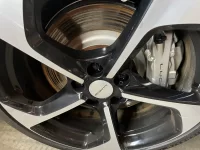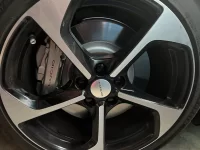It's more than cosmetics. Serious rust pitting can and will occur. I do not know how long it takes. The discs are soft iron and can show rust in dry Denver in hours. I have seen brake discs where one side of the brake caliper freezes up, the brake pad on this frozen side then never touches the disc, that side of the disc rusts in six months to the point of deep pitting, and the disc is ruined. If a pad never touches the disc, the disc will keep rusting and rusting and rusting.
Decades ago, When I put high value Porsches in storage for months, I pulled the pads and sprayed both sides of the disc with waxy coating. The idle discs could rust to ruin otherwise. I think Euro cars shipped to the US still coat the discs with a non oily spray that burns off with use or a squirt of cleaner.
This is just my opinion, but I think rusty discs need long slow moderate brake application for 30+ seconds at a time to burnish/grind off the surface rust. Not hard step on it till it almost locks. When bedding in new pads and discs on Audis, we get up to 60 and then do a moderately hard slow to a stop. And repeat three to five times.
Many times you will see advice about using very hard brake applications to fix brake judder. That's usually caused by a layer of baked on brake dust on the pad or disc. And very hard braking it needed to burn or wear it off. But, again in my opinion, surface rust is different. Think of your brake pad as sandpaper, and moderate applications sanding away the surface rust.





